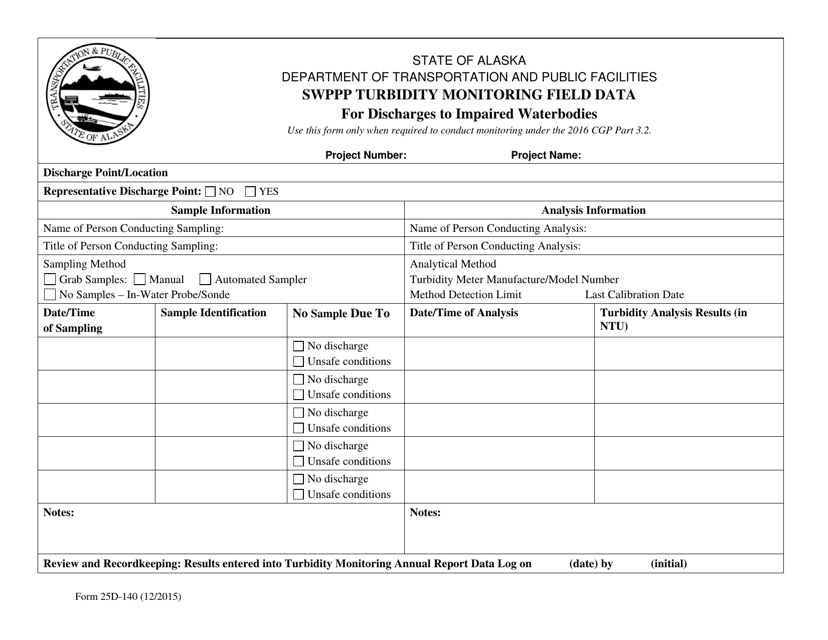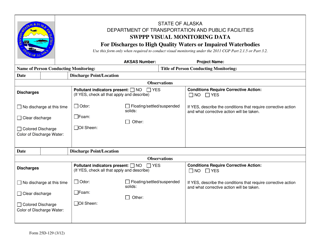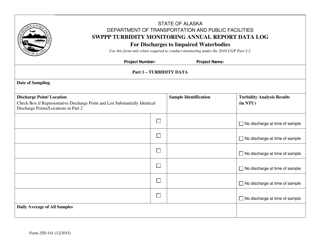Form 25D-140 Swppp Turbidity Monitoring Field Data for Discharges to Impaired Waterbodies - Alaska
What Is Form 25D-140?
This is a legal form that was released by the Alaska Department of Transportation and Public Facilities - a government authority operating within Alaska. As of today, no separate filing guidelines for the form are provided by the issuing department.
FAQ
Q: What is Form 25D-140?
A: Form 25D-140 is a document used to record turbidity monitoringfield data for discharges to impaired waterbodies in Alaska.
Q: What is a SWPPP?
A: SWPPP stands for Stormwater PollutionPrevention Plan. It is a plan that outlines measures and strategies to prevent pollution from entering stormwater runoff.
Q: What is turbidity?
A: Turbidity is a measure of the cloudiness or haziness of water. It indicates the presence of suspended particles that can impair water quality.
Q: Why is turbidity monitoring important?
A: Turbidity monitoring is important to assess and control the amount of suspended particles in water. High turbidity can harm aquatic life and affect water clarity.
Q: What are impaired waterbodies?
A: Impaired waterbodies are bodies of water that do not meet the water quality standards set by regulatory agencies. They may have high levels of pollutants or other impairments.
Q: What kind of data is recorded on Form 25D-140?
A: Form 25D-140 records information such as monitoring location, date and time of sampling, turbidity measurements, and any corrective actions taken.
Q: Who is responsible for using Form 25D-140?
A: The entity or individual discharging to impaired waterbodies in Alaska is responsible for using Form 25D-140 and submitting the required monitoring data.
Q: Are there specific guidelines for turbidity monitoring in Alaska?
A: Yes, Alaska has specific guidelines and requirements for turbidity monitoring, which are outlined in the Alaska Pollution Discharge Elimination System (APDES) permit.
Q: What happens if a discharge exceeds turbidity limits?
A: If a discharge exceeds turbidity limits, corrective actions must be taken to mitigate the impacts and prevent further violations. These actions may include adjusting sediment controls or reducing the discharge volume.
Form Details:
- Released on December 1, 2015;
- The latest edition provided by the Alaska Department of Transportation and Public Facilities;
- Easy to use and ready to print;
- Quick to customize;
- Compatible with most PDF-viewing applications;
- Fill out the form in our online filing application.
Download a printable version of Form 25D-140 by clicking the link below or browse more documents and templates provided by the Alaska Department of Transportation and Public Facilities.



